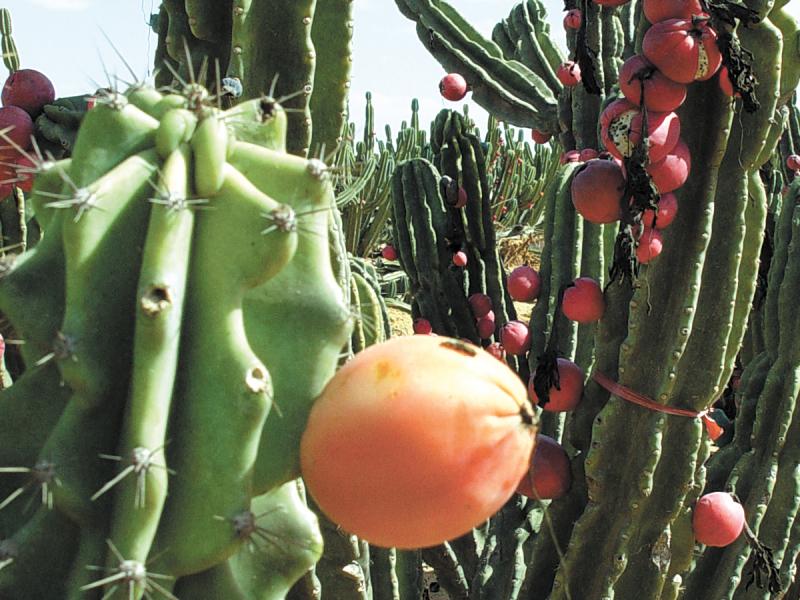When we think of glaciers we rarely think of Peru, but Peru has 1,769 glaciers in its 28 different climate zones. With big sky and high mountains, the ancient Incas were serious astronomers, and they were the only ancient culture in the world to define constellations of darkness as well as light. Even today, the main streets of Cuzco are laid out to align with the stars during feast days.
Nights also give us the flower of the Peruvian Apple Cactus (Cereus peruvianus, or Cereus repandus syn.), with each bloom lasting a single night. The huge, cream-colored flowers give way to violet-red to yellow thornless fruits with crunchy white flesh and edible seeds.
Also known as giant club cactus or hedge cactus, this is a stunning ornamental blue-green upright cactus that grows in a single column with three to five blades. Long-lived, they can easily grow to six or seven feet tall indoors after many years. Because of their upright growth, they make a stunning display in hallways, bedrooms, offices and living rooms.
Peruvian Apple Cactus are resistant to salt spray, so they can spend summers outdoors even near the ocean.
Being a cactus, this plant likes bright light and just a little water. Choose a spot in your house that gets full sun; a south-facing window is ideal.
Water Peruvian Apple Cactus thoroughly when it is actively growing during the spring and summer. Give it considerably less water during the winter. Always let the soil dry out between waterings.
Use a cactus potting soil that drains well. You might even add a bit more sand so the soil does not hold water. Apply a slow-release granular organic cactus fertilizer in early spring and summer when the cactus is actively growing.
You can repot the young plants every year in spring. Once they mature, you will only need to repot them every few years, always moving to a pot size just slightly larger.
Propagate Peruvian Apple Cactus by taking cuttings from the stem top. Let the cutting dry out and callus over by setting it aside for a week or two before planting. You may also find small new plants or offsets growing at the base of the plant during spring or summer. These offsets can be immediately potted up as new plants.
Because Peruvian Apple Cactus blooms at night, you may need to hand-pollinate the flowers using a soft artist’s brush. There are several night pollinators such as moths, flies and bats.
Fruit will start to develop in late fall to early winter, just when the cactus begins to go dormant. The fruit are not only delicious, but nutritious, being packed with beta carotene, fiber and vitamin C.
If you notice your cactus leaning toward the light source, simply rotate the pot every few months and the cactus will grow straight and tall again.
Plant a Peruvian Apple Cactus and enjoy stunning columns of gray-green that burst into bloom during the night when perhaps the dark constellations of the Incas are the only creatures to enjoy them, and remind you that we are not alone in the universe.





















































